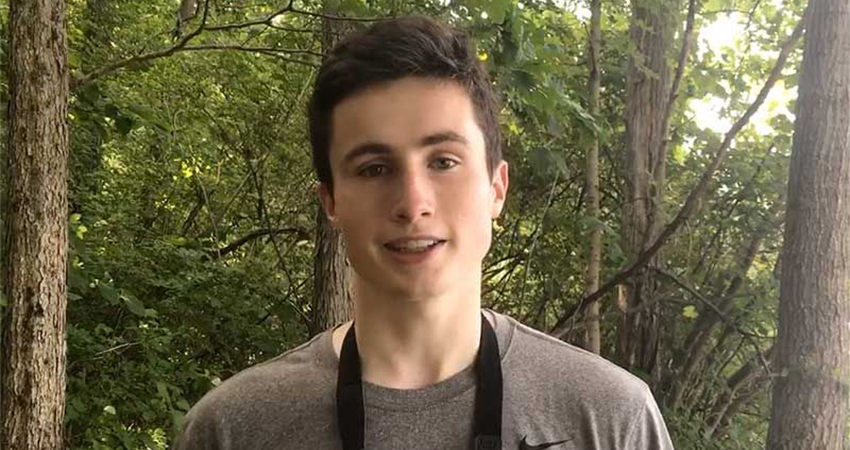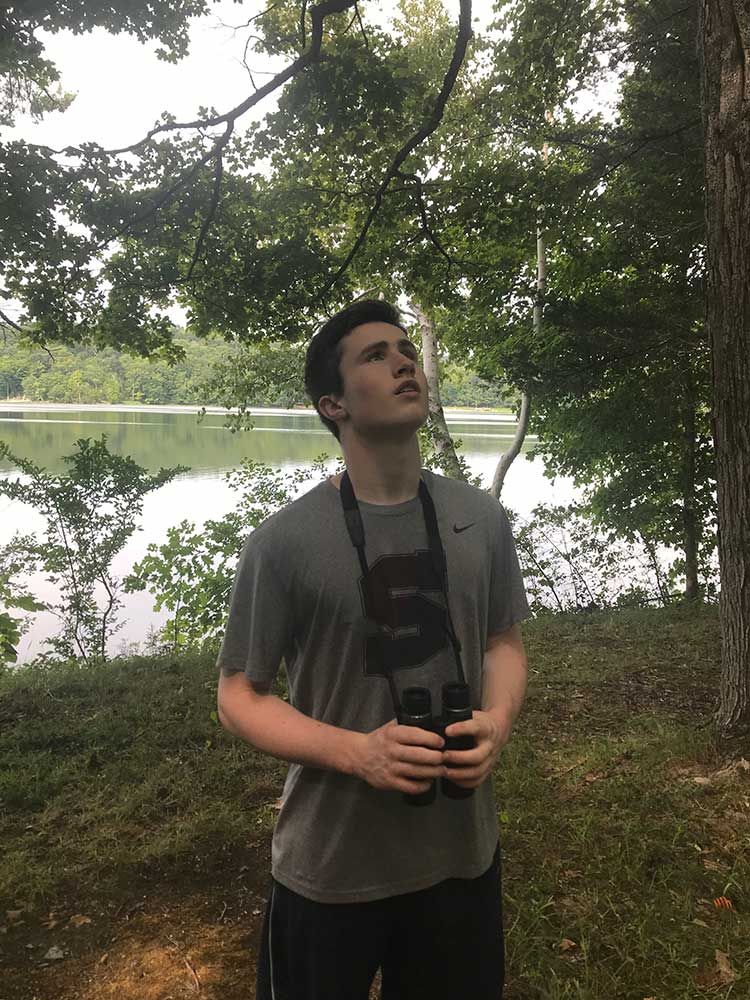Today I embarked on what would be my final birding blog for the Noble Horizons. Due to the damage of Tropical Storm Isaias in the local area, my mom and I decided to stay not only in the town of Lakeville but in the comfort of my own yard and neighborhood.
When starting out in birding, it’s a good idea to see what species are in your own backyard first. Learning about every bird that lives in your area can be extremely daunting and hard to achieve. So, I highly recommend starting small and chunking it. Begin by learning the 20 or so species that you can find in your yard before branching out into some of the birding locations covered in the past five weeks of this blog series.
We stepped out into a damp environment all thanks to the thunderstorm that had rolled through the previous night. We decided we would take a short walk around the street before trading our feet for paddles and venturing onto the lake next to our house. We began the day off by observing the House Wren nest (from a distance of course). They are versatile nesters and can be found in a variety of locations, such as tree cavities, plant pots, and birdhouses. We could hear the faint squeaks of the babies in the birdhouse hanging in our tree. Soon a female would enter with an offering of food.
We continued to walk down the street and we were met by a series of songs and calls. The first thing that caught my attention was the classic in-flight chirping of the American Goldfinch. Along with that were other common backyard birds including Black-capped Chickadees and Tufted Titmice. Continuing up the road we heard squeaks and chirps coming from a small set of shrubs. Upon closer inspection we found out it was hiding several Carolina Wrens inside before they flew across the road towards the wooded area. We saw a Grey Catbird before turning around and headed the other way.
On the way back we heard the sweet song of the Baltimore Oriole, but I never got to see it. It was at that point when we decided we had birded as much as we could on land, and we should move to water.
While kayaking, we traded quality for quantity in the birds we observed. Our first sighting wasn’t a bird but rather a rather sizable Largemouth Bass patrolling the shallows of the lake. I was disappointed not to have my rod with me at that point. Then we saw two species of turtle swimming on the lake surface. One was the relatively harmless Painted Turtle while the other was the drastically more dangerous Common Snapping Turtle–and a big one at that.
As for bird life we were greeted by two amazing sightings. As we approached a cove, we spooked a bird which took off from an obstructed view and darted across the lake. I was able to identify it as a female Wood Duck from the unique head and white ring around the eye.
The final bird we saw was a first for the birding blogs–and a unique species. My mom and I were paddling back when we once again spooked a large blue and white bird. I recognized it immediately as Belted Kingfisher, a bird that dives into the water to catch small minnows and other aquatic life. What a way to finish the series off.




